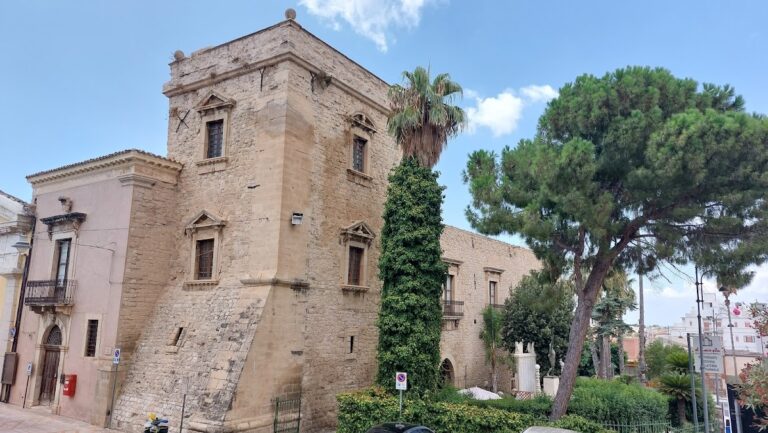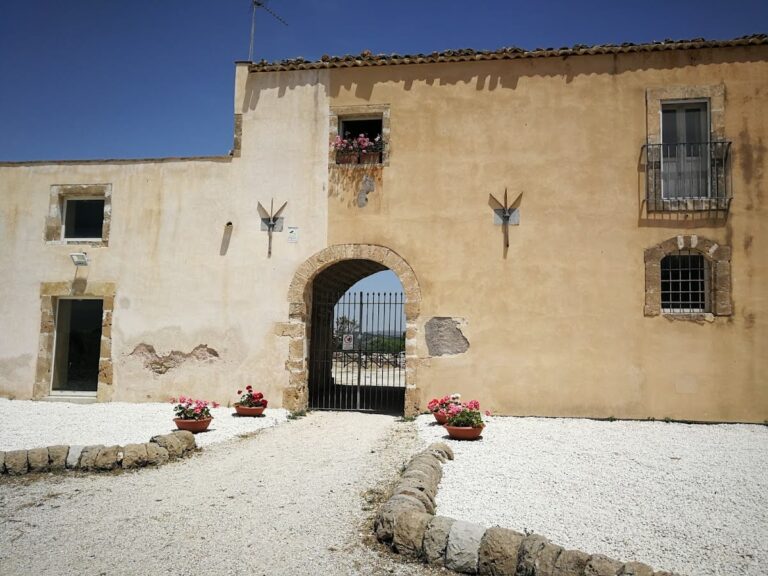Donnafugata Castle: A Historic Neo-Gothic Residence in Southern Italy
Visitor Information
Google Rating: 4.5
Popularity: High
Google Maps: View on Google Maps
Country: Italy
Civilization: Unclassified
Remains: Military
History
Donnafugata Castle is situated near Ragusa in southern Italy. Its origins trace back to the 14th century when it was likely constructed by the Chiaramonte family, who were counts of Modica. This early fortress may have been erected on the foundations of an even older tower dating to the 13th century, though documentary evidence from this period is limited. Stories linking the castle to prominent 15th-century figures, such as the nobleman Bernardo Cabrera and Queen Bianca of Navarra, stem from local legend rather than verified historical records.
In the mid-17th century, specifically in 1648, the fief of Donnafugata came under the ownership of Vincenzo Arezzo-La Rocca. He transformed the property into a fortified farmhouse, marking the beginning of its gradual evolution beyond a military stronghold. Over the centuries, the site grew into a neoclassical residence, reflecting changing tastes and functions.
The most significant transformation occurred during the 19th century under Baron Corrado Arezzo, a scholar and politician. He extensively remodeled the estate into the neo-Gothic style evident today, adding a prominent main facade adorned with a loggia supported by elegant three-lobed arches. The castle passed down through the Arezzo family, later connecting by marriage to Clementina Paternò di Manganelli, widow of Viscount Gaetano Combes de Lestrade.
Following a period of neglect, the municipality of Ragusa acquired the estate in 1982 and undertook restoration efforts to preserve the structure and its grounds. Throughout its history, Donnafugata Castle has also featured in various film and television productions, serving as a cultural landmark and a “house of memory” commemorating notable residents like Baron Corrado Arezzo de Spuches and Viscount Combe de Lestrade.
The name “Donnafugata” itself has inspired multiple interpretations. One legend tells of Queen Bianca of Navarra escaping imprisonment at the site, hence “woman who fled.” Linguistic studies suggest the name may derive from an Arabic term meaning “Source of Health,” adapted into Sicilian over time. Another tale recounts a tragic suffocation incident involving a woman, while yet another links the name to Queen Maria Carolina’s period of house arrest in the early 1800s. These varying explanations highlight the castle’s layered history and cultural significance.
Remains
Donnafugata Castle today is a sprawling noble residence, occupying more than 7,500 square meters across three floors. Built primarily in the late 19th century, its architecture showcases a neo-Gothic style capped by two flanking towers. The main facade features a loggia with distinct trilobed arches, a design element introduced by Baron Corrado Arezzo during his extensive renovations.
Inside, the castle contains over 120 rooms, of which about twenty are accessible and retain original furnishings and decorations. Among these is a music room decorated with trompe-l’œil paintings that create illusions of space and design. A grand hall displays the coats of arms belonging to Sicilian noble families along with two ancient suits of armor, while a mirror hall is adorned with elaborate stuccoes. The picture gallery houses neoclassical artworks attributed to followers of Luca Giordano, an important Baroque painter.
The bishop’s apartment stands out with its fine Boulle furniture, originally intended for a high-ranking cleric connected to the Arezzo family in the 18th century. A bedroom linked in legend to the Princess of Navarra contributes to the castle’s narrative depth. Approaching the residence, visitors cross a monumental staircase crafted from local bituminous stone known in the Ragusa area.
Surrounding the castle is an extensive park covering approximately eight hectares. It once contained more than 1,500 plant species as well as leisure structures including a circular temple and a coffee house. Under this temple are artificial grottoes featuring fake stalactites. The grounds also contain a distinctive dry-stone labyrinth inspired by the Hampton Court maze near London; the labyrinth’s walls were originally covered in climbing rose bushes to obscure vision and movement.
Within the park, Baron Corrado Arezzo installed mechanical “pranks” designed to entertain visitors. These included a sprinkler triggered when sitting in a particular spot and a chapel mechanism releasing a stuffed monk figure. While these features are currently inactive, restoration is ongoing. Nearby, empty tombs were reportedly used in playful attempts to frighten young women, encouraging them to seek consolation from the baron. At the park’s entrance, a large ficus tree was once famous for its leaves that people used as natural postcards.
An unusual feature of the site is its own railway station, established less than 400 meters from the castle thanks to Baron Corrado Arezzo de Spuches’ political influence. This station continues to serve the area, with regional trains regularly stopping there, linking Donnafugata castle to the broader region.










